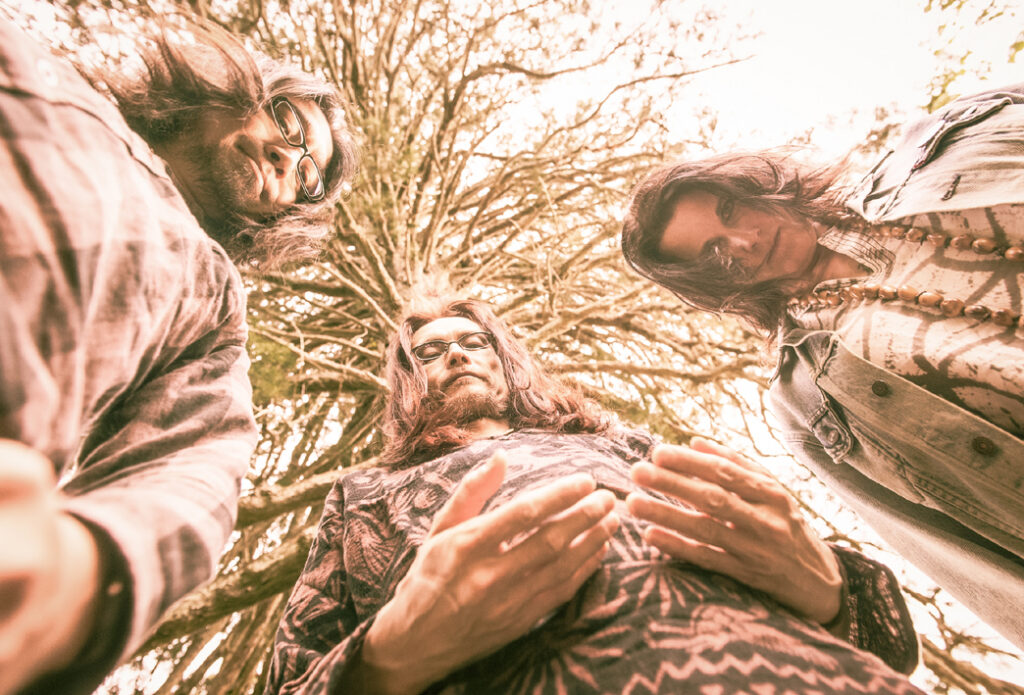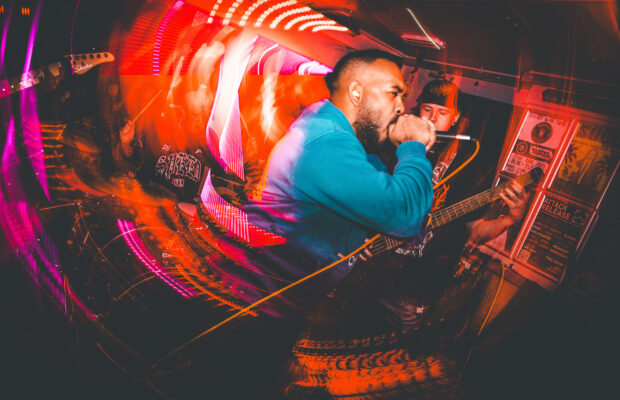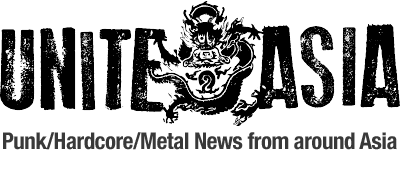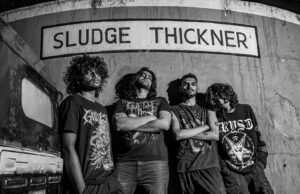WEEDIAN Release Massive 40 Track All Japanese Sludge/Doom/Stoner Comp [Japan]
By Unite Asia on June 3, 2022@uniteasia
Woah this is HUGE…check out this brand new 40-track compilation featuring Japanese stoner, sludge, doom, psych rock bands released by WEEDIAN. The comp even comes with this AWESOME write-up by a member of the band Eternal Elysium that chronicles the history of the genre in Japan.
AMAZING.
“Doom, a keyword that no one here in Japan had ever heard of until Rise Above Records released the “Dark Passages” compilation in 1991. I had seen the word only a short time before in the margins of some fanzine article, but that was only because I was always looking for the right word for pioneers such as Saint Vitus, Trouble, and Pentagram, usually in small fonts that it was easily overlooked. Then, Cathedral’s debut made a small splash here. Since that time, we started calling the music created by bands like Trouble, and Candlemass, which emphasized deep, slow beats and lyrical melodies that we love, “Doom Metal”. It was limited to the underground, though.
It’s presumptuous of me to talk about myself, but my band, Eternal Elysium, was formed in 1991. At first, I thought that no one in Japan knew what “Doom Metal” was, except me. Most of the musicians around me at the time didn’t even care about Black Sabbath, so absolutely no one was interested in playing Doom.
The first musician who called my band’s sound Doom was Tatsu, just before he formed Church of Misery. He made it clear to me that he wanted to start a Doom band separate from the metal band he was playing in then. This was my first meeting with someone who truly loved Doom. As far as we knew, there were no other active Doom bands in Japan at that time.
Since the late 90’s, we Doom/Stoner/Psychedelic bands have been expanding our activities overseas. Church of Misery are roaring its king of doom sound worldwide, and with a great deal from Rise Above, has become successful in the world scene, as you know. Eternal Elysium also began to journey to the US and other countries, releasing albums from Meteor City and some other labels worldwide, and continues pursuing the possibilities of Doom music.
We may have been pioneers of Doom after this word appeared, but I don’t know if we were the founders. In the 80’s, I already knew a band playing traditional Doom Metal. That was Genocide Nippon, who is also on this album. They had established a twin-guitar doom metal sound by the time they put out their demo (’83).
Further back to the roots, Flower Travellin’ Band’s “SATORI” and Blues Creation’s “Demon & Eleven Children” had doom sensibilities in the early 70’s without hiding the influence of Black Sabbath. Speed, Glue & Shinki played heavy blues with openly dope and stoner tastes. Their predecessor bands were active in the scene/movement called “Group Sounds (GS)”. The GS community was under the influence of Japanese Pop culture and on major distribution as a business using the western psychedelic taste of its time. Most of the bands played for decent teenagers, and decent, straight-laced fans didn’t feel what psychedelic was. However, some important bands and musicians who emerged from this scene were different. Flowers, Jacks, Golden Cups, The Dynamites, and other great bands probably sublimated the psychedelic experience into their sounds in the late 60’s. These real bands are kind of originators connected to the first generation of Japanese psychedelic, blues, hard rock, progressive, jam bands, and more.
J.A. Seazer brought heavy rock flavor to the theater, weaving in avant-garde expressions. Some songs from hard rock legend Carmen Maki & Oz had slow and heavy riffs. Far Out played a downer and Zen-influenced sound. April Fool, Foodbrain, Too Much, Helpless Soul, Ranmado, and other bands who would later become part of the Japanese heavy rock lineage produced a small but important body of work.
Most of these bands had broken up or changed direction by the mid ’70s, but re-evaluation of their past works began around the time of being reissued on CD.
Since the 70’s, Les Rallizes Denudes have been pursuing their own specific psychedelic path. This psychedelic lineage connects to bands like Katsurei, Acid Mothers Temple, Yurayura Teikoku, Rovo, Hibushibire, Blasting Rod and so many more.
It’s no secret that Kikagakumoyo’s beautiful performances and oriental air have brought them success in recent years. This direction is becoming more prevalent among young domestic groups.
Not to forget the two bands Subvert Blaze and Hanadensha from the mid-late 80s, both of which released albums on Alchemy Records – a psychedelic/noise label that emerged in Osaka. Subvert Blaze carried the scent of 70’s through that period with a Sabbath-esque sound, and waist-length hair and bell-bottom looks while Hanadensha transformed from a punkish rock band into completely tripped-out sound-scape producers.
I first heard the term “Stoner Rock” in the mid-90s, when the desert rock sound of Kyuss, Fu Manchu, and others was imported. I was impressed and absolutely fell in love with it. Greenmachine combined the textures of Hardcore and Kyuss, and released their “Hardcore-Rock” sound on Man’s Ruin. Since then, they continue to be active through several hiatuses.
In addition, Boris and Corrupted should totally be mentioned. Both bands have pretty strong Sludge/Stoner/Doom/Psychedelic flavors, but Boris, in particular, keeps expanding their sonic possibilities and other activities more and more, achieving worldwide recognition. Corrupted professes not to have a specific genre in mind since they started their career, but it’s kind of a miracle that the ultimate bass-heavy tones and lamentable view similar to Earth, and Sunn O))) developed on its own in this island nation.
We should not forget about Ningenisu.
I found them on a TV program in 1989. I was so surprised because I didn’t expect a sound of the likes of Sabbath, or Budgie would ever be put out from the cheap speaker of a TV again. They wore some kinds of traditional kimono and cartoon character costumes and played heavy rock mixed with Tsugaru dialect singing and traditional Japanese melodies. It was already Doom Rock before the word Doom had come. Their existence was often misunderstood because they were welcomed mainly just in in the subculture scene, but they kept creating albums almost every year even after being dropped from a major label. After more than 30 years of their history, they finally performed overseas for first time, just before the pandemic.
From the Japanese scene in the 90’s, which was completely barren of Doom/Stoner music, overseas tours by Japanese bands with this outlook are now not unusual. Even as I write this, Dhidalah is wowing crowds in Europe.
Most of the bands on this compilation are active, but the Japanese Doom/Stoner/Psychedelic scene is still small, however, it definitely exists and is still improving. There aren’t many, but young talents are increasing. I hope this release will bring more attention to Japanese heavy rock and culture.
Finally, I want to say thanks to all the fans, labels, related people, and everyone who keeps supporting Doom/Stoner/Psychedelic music and this community. Music has a magical power to break down language barriers and allow us to communicate with each other. I know this from my long experiences everywhere I’ve been.
Enjoy!
Yukito Okazaki – Eternal Elysium.”
Featured

INTERVIEW: From Bangladesh To Scottish Hardcore – Vocalist of RESIST Talks To Us About Life
Unite Asia | November 8, 2025INTERVIEW | Farhan Vocalist Scottish Hardcore Band RESIST This amazing series continues today with a new instalment of documenting the small minority of Asians involved in UK hardcore. Today’s...
-
 Unite Asia | October 30, 2025
Unite Asia | October 30, 2025
CHECK OUT: Tehran Punk Rock Act THE LASHES Give Us The Deets [Iran]
-
Reviews
-
 Unite Asia | November 11, 2022
Unite Asia | November 11, 2022
REVIEW: Hong Kong Post-Hardcore Act Wellsaid Release Sophomore Album ‘Lurking’
-
 Unite Asia | April 3, 2022
Unite Asia | April 3, 2022
REVIEW: Hardcore Punk Act SPIT Release Self-Titled Debut Album [Taiwan]
-
 Unite Asia | August 31, 2021
Unite Asia | August 31, 2021
REVIEW: Melodic Death Metal Band Reborn Release EP [Vietnam]
-
 Unite Asia | August 4, 2021
Unite Asia | August 4, 2021
REVIEW: The Most Important Punk Rock Release of 2021 – The Rebel Riot [Myanmar]
-
 Unite Asia | June 15, 2021
Unite Asia | June 15, 2021
REVIEW: Metalcore Band Prompts’ ‘Magenta Smile’ Gets A Full Review [Japan]
-
Upcoming Releases
-
 Unite Asia | December 20, 2025
Unite Asia | December 20, 2025
Hardcore Band CENTIPEDE Release New EP ‘Death Sentence’ [Malaysia]
-
 Unite Asia | December 12, 2025
Unite Asia | December 12, 2025
Philippines and Canadian Hardcore Unite On New Split – KARBINE/FOR ONE HATE
-
 Unite Asia | December 9, 2025
Unite Asia | December 9, 2025
-
 Unite Asia | December 1, 2025
Unite Asia | December 1, 2025
Indian Nu Metal Band DEATH ON THE HORIZON Drop New EP [India]
-
 Unite Asia | November 19, 2025
Unite Asia | November 19, 2025
From Lahore to Belfast, D Beat Crust Band RATS BREATH Release 2 Song Promo [Ireland]
-
Facebook
Recent Posts
-
 Unite Asia | December 20, 2025
Unite Asia | December 20, 2025
Extreme Metal Act REDVI Release New Single ‘Xenocide’ [Iran]
-
 Unite Asia | December 20, 2025
Unite Asia | December 20, 2025
Hardcore Band CENTIPEDE Release New EP ‘Death Sentence’ [Malaysia]
-
 Unite Asia | December 16, 2025
Unite Asia | December 16, 2025
20 Year Veterans of Indonesian Hardcore Punk – SATCF – Return With a Banger [Indonesia]
-
 Unite Asia | December 15, 2025
Unite Asia | December 15, 2025
First Taste of Lebanese Post Hardcore Band GLIDDEEE’s Upcoming Debut EP [Lebanon]
-
 Unite Asia | December 15, 2025
Unite Asia | December 15, 2025
Malaysian Beatdown Band MONEYBAG Announce Dope 10RM Malaysian Tour
-
Sitemap
Latest Posts
-
 Unite Asia | December 20, 2025
Unite Asia | December 20, 2025
Extreme Metal Act REDVI Release New Single ‘Xenocide’ [Iran]
-
 Unite Asia | December 20, 2025
Unite Asia | December 20, 2025
Hardcore Band CENTIPEDE Release New EP ‘Death Sentence’ [Malaysia]
-
 Unite Asia | December 16, 2025
Unite Asia | December 16, 2025
20 Year Veterans of Indonesian Hardcore Punk – SATCF – Return With a Banger [Indonesia]
-
 Unite Asia | December 15, 2025
Unite Asia | December 15, 2025
First Taste of Lebanese Post Hardcore Band GLIDDEEE’s Upcoming Debut EP [Lebanon]
-
Categories
Featured hardcore Indonesia Japan Philippines metal female hardcore punk Malaysia Singapore metalcore Hong Kong punk rock Thailand pop punk punk China India death metal indie rock Korea grindcore emo Post hardcore black metal Taiwan Nepal melodic hardcore thrash metal metallic hardcore Vietnam post rock hardcore metal alt rock screamo beatdown deathcore emotive punk post punk shoegaze
Copyright © 2024 Unite Asia. Designed and powered by ALT-X Agency.




